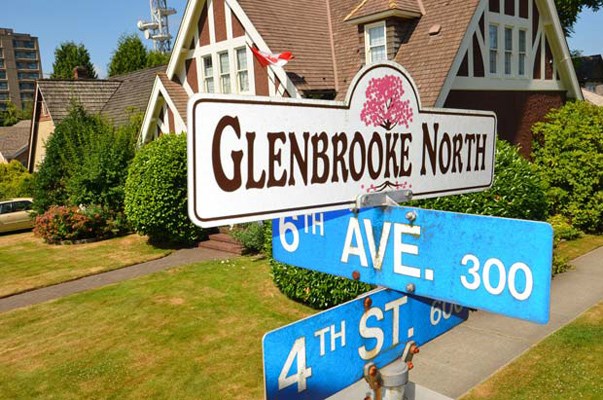Probably the biggest change to the Glenbrooke North neighbourhood over the years is the escalating price of real estate.
Otherwise it has, for the most part, remained a neighbourhood of quiet streets, friendly neighbours and families. The area's large yards and central location - it's close to parks, schools, shopping and city amenities - make it a sought after place to nestle in and raise children.
"That's one thing that's characterized Glenbrooke - it's a very stable residential neighbourhood, very strong and not a lot of change over time - even today," says local historian Jim Wolf.
The Royal Engineers designed the neighbourhood's street patterns before their departure in 1863, according to a City of New Westminster report on local neighbourhoods. The area became part of the city in 1888.
In the early years, it had the occasional cottage house, but, for the most part, it was dense bush land.
One of the main landscape characteristics was the "glen" creek that drained down through the area to the Fraser River.
"It was really a magical piece of New Westminster's history," Wolf says about the creek. "You would have seen it (the brook) right up until the 1920s and '30s."
The brook was filled over to make way for the wave of residents coming to the city during the industrial boom, Wolf said. Glenbrooke would soon become home to many of the workingclass families that carved out a life in the riverfront town.
"It (Glenbrooke) was always considered very working class in the sense that it had a lot of people that were required for all of the industries that New Westminster had," Wolf says. "New Westminster had a lot of industries along the Fraser River, like saw mills, rope factories and the chemical factories, paper plants, institutional settings, like the penitentiary, the former Woodland's hospital. All of those needed workers.
"Even downtown, there were a lot of little businesses and industries that relied on having employees, and these employees, for the most part, could not afford the
large grand homes and properties within the Queen's Park or even the Uptown area."
But the working-class newcomers could build their own little cottage or modest bungalow in the Glenbrooke "suburb." Through the years, the neighbourhood took shape with unpretentious homes. There was no single era that saw a hefty building boom, which explains the variety of housing styles in the neighbourhood.
"I think what you see in Glenbrooke is that not all of the lots were built at once," Wolf says.
It created a "patchwork" of housing styles, which is part of its character, he explains.
One of the only other major changes over the years, besides the price of property, is the crushing traffic that surrounds the area - an unfortunate modern fact of life for many New Westminster neighbourhoods.
But inside Glenbrooke is an "island of calm," as Wolf describes it, with the same quiet roads where children have played street hockey and kick-thecan for many years. And likely will for many years to come.



